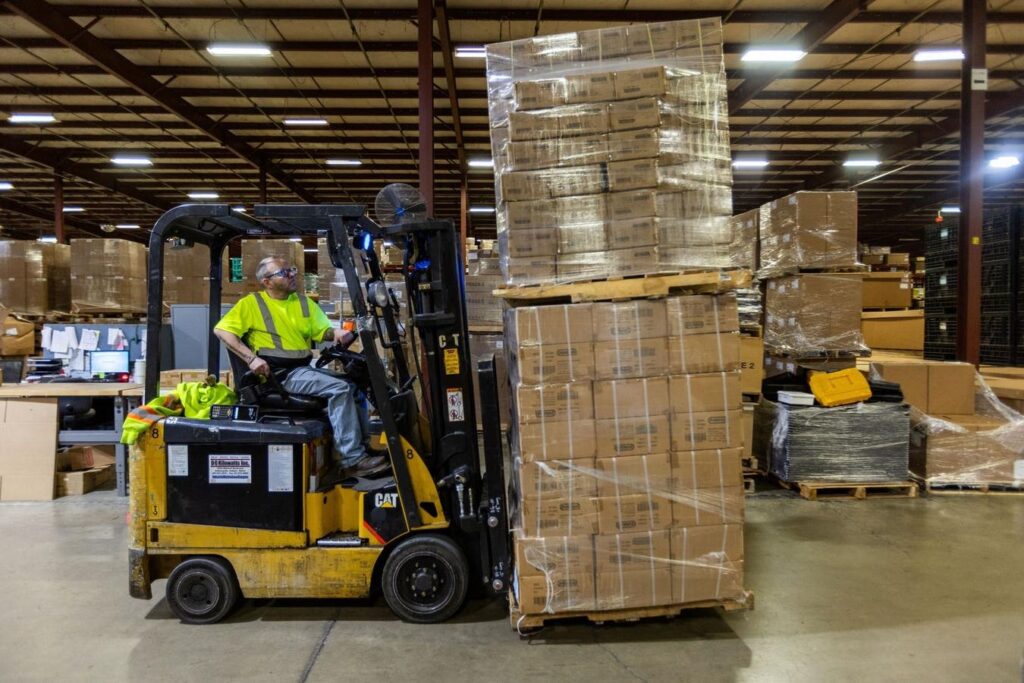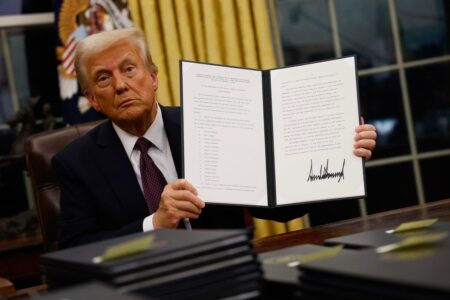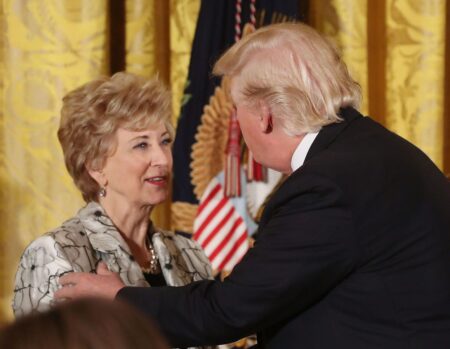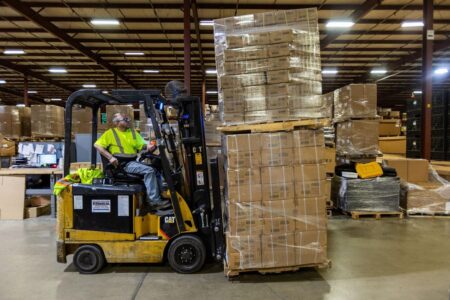Much of the early talk about the Trump administration’s tariffs centered on bringing manufacturing jobs back to the United States. There supposedly would be many more high-paying jobs with solid benefits. But without a coherent plan, an objective look at the state of manufacturing, and a clear-eyed recognition of what a change would actually do, a factory renaissance remains out of reach. Here are some considerations and realities keeping things relatively steady.
Trump’s And Biden’s History Of Manufacturing Jobs
As policy debates and judgment of candidates take shape, research in multiple disciplines have shown how voters lack long memory of issues. According to social scientists, voters have difficulty remembering even a year before an election, let alone longer times. Politicians usually frame things in terms of the previous office holder. However, it takes greater context to see how a society and its governance have shifted over time.
For example, when addressing presidential candidates Donald Trump and Kamala Harris on U.S. manufacturing in early September 2024 as part of pre-election coverage, FactCheck.org looked at patterns under both Biden and the first Trump administration.
Both faced a similar economic dynamic. Trump came in at the end of an industrial mini recession in 2015 to 2016, with 900,000 manufacturing jobs that had been added after the Great Recession. This is a recovery and isn’t the doing of a president, whether Republican or Democratic. The mini-recession saw a loss of 7,000 manufacturing jobs. Then there was an addition of 462,000 jobs in 2017 and 2018, followed by a loss of 43,000 in 2019.
Combined job losses in 2019 and 2020 created a net loss of 188,000 manufacturing jobs before Trump’s first presidency ended in January 2021.
Something similar happened with the Biden administration, where Harris served as vice president. After the slump, the industry came back and added 765,000 manufacturing jobs. The additions then stalled in his third year, slowing and ultimately showed a loss of 13,000.
The Even Bigger Picture
To understand what has happened with manufacturing, it’s necessary to look at a bigger slice of the country’s history. The graph below of all manufacturing employees from 1939 through March 2025 comes from the Federal Reserve Bank of St. Louis’ Federal Reserve Economic Data site, also known as FRED.
Here’s a timeline of highlights:
- January 1939 — 9,077,000 employees
- December 1943 — 16,526,000 (height of World War II product)
- June 1970 — 19,553,000 (historical high and beginning of the great outsourcing wave)
- Feb 2010 — 11,439,000 (nadir)
- August 2019 — 12,789,000 (pre-pandemic high point)
- May 2020 — 11,610,000 (pandemic low)
- Feb 2023, 12,900,000 (post-pandemic recovery)
- March 2025, 12,764,000 (most recent available number)
Over time, at least two major changes happened. One was the great manufacturing outsourcing wave. Companies decided they could save money by having a lot of commodity manufacturing done overseas.
Not only was there cheaper labor to be had, but major locations like China didn’t have similar environmental regulations. Compliance was expensive but a cleaner environment had many benefits. So, companies externalized those costs and imposed the implications on foreign populations.
Manufacturers Don’t Need As Many Employees
Another major factor was the focus on higher-profit manufacturing in the U.S. and the increasingly efficient ways in which it was done — automation even before the increased levels that are now possible. Below is another graph that I put together at the FRED site.
The graph involves dividing monthly manufacturing output, indexed to 2017 to remove inflation effects, by the monthly number of employees in manufacturing. The higher the number, the greater the output per employee, meaning the fewer employees needed.
Low-margin manufacturing is understandably not as appealing to companies, which makes that type of work unlikely to return, and even if businesses brought back more factories, the U.S. is highly unlikely to ever need the high levels of manufacturing employees again.
And, even if they did bring back more factories, such facilities can take years to find a location, get through permitting, build, equip, staff, and get running. That would leave a different White House claiming credit.
Read the full article here
















